The NanoVNA is tiny one-and-a-half port Vector Network Analyzer. As well as being very small it is also extremely cheap. I picked mine up for £35 on ebay. When it arrived, I was surprised and delighted to find it included a SMA (male) calibration kit, a SMA female back to back (a SMA barrel in RF engineering slang), and a pair of SMA cables. Normally a good calibration kit costs in the order of £500.
Given that much of a VNA’s performance relies on the quality of its calibration, I had a look at this very cheap calibration kit using a very much more expensive VNA, the LA Techniques LA19-13-03.
VNA calibration is performed using a technique called SOTL, which stands for Short Open Through Load. Lets take a look at each of these in turn.
Measurements of the short, open, and load are performed through the supplied SMA barrel. This provides a shift in the reference plane in addition to the variation in the reference plane of the Short or Open.
Short
The return loss was as close to 0dB as can be accurately measured. What is more interesting is the group delay of S11. This tells us what the electrical position of the short circuit relative to the reference plane and how it varies across frequency.
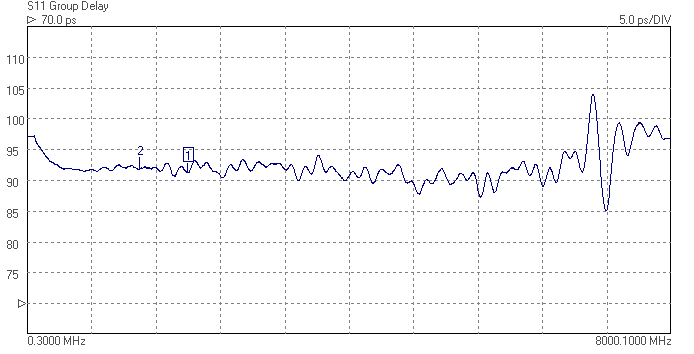
Given that my NanoVNA only operates to 900MHz the wiggles above 6 GHz can be ignored. 92ps equates to an electrical length of 27.6mm. There is however a ~5ps variation over the first 400MHz equating to a 1.5mm shift in reference plane.
Open
Again the return loss was negligible. The S11 group delay looks like this.
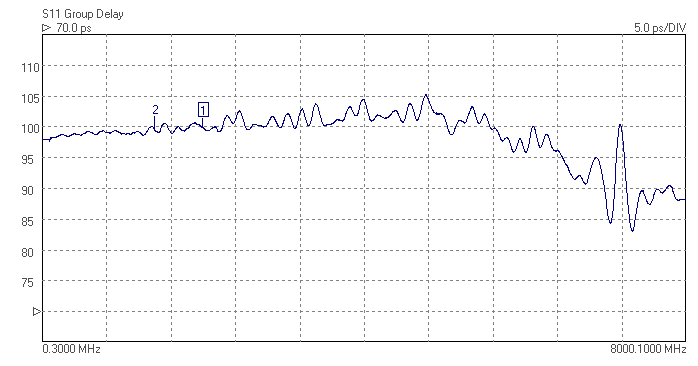
Reasonably consistent performance up to 900MHz but different to the short. This causes calibration errors if the calibration software does not alow for different electrical lengths for the Open and Short references. While expensive VNAs alow separate complex models for the calibration references, the NanoVNA does not alow separate reference offset parameters. 98ps equates to 29.4mm. 1.8mm different to the Short, or about 2° at 900MHz.
Load
What maters here is staying as close to an ideal 50 ohms as possible over frequency with zero inductive or capacitive parts to the impedance. A scalar way of quantifying this is the magnitude of S11.
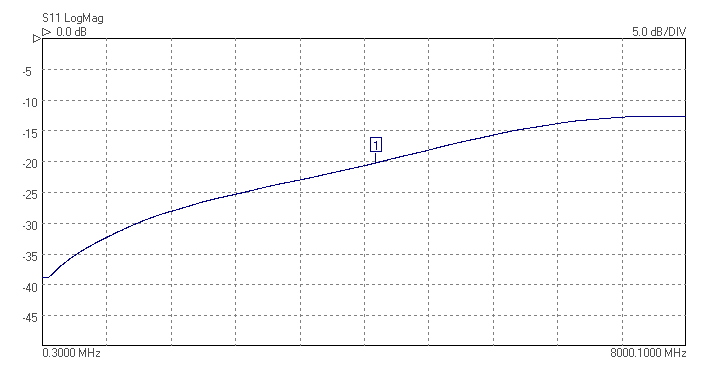
Perfectly adequate for use up to 900MHz.
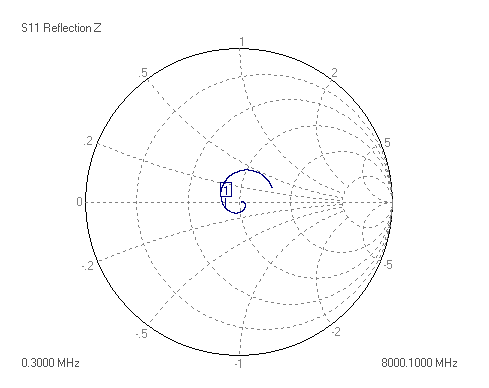
Through
What matters here is low insertion loss and no impedance mismatch.
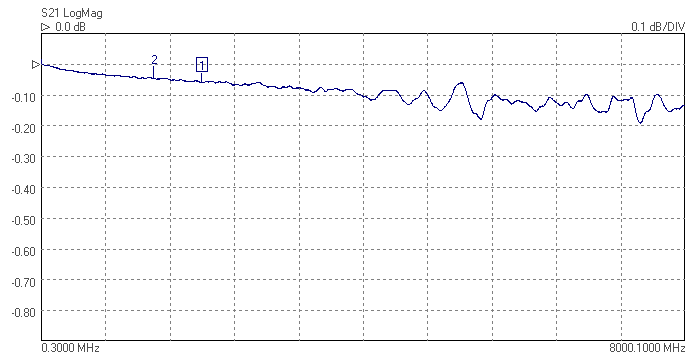
Less than 0.05dB loss up to 900MHz counts as very low.
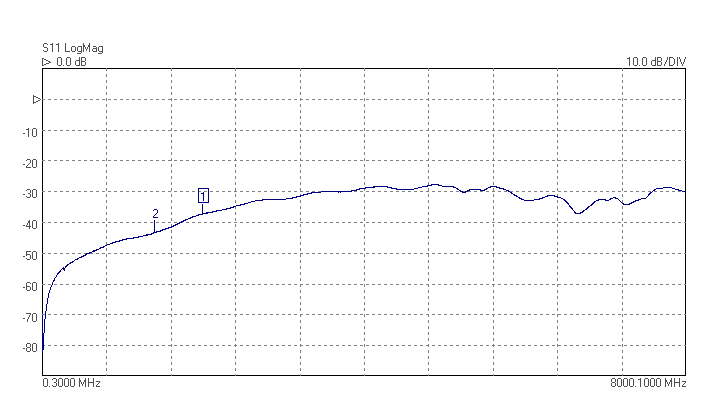
Here we see that the added mismatch due to the SMA barrel is negligible.
Conclusion
Good enough up to 900MHz as I’m not expecting super precision from a £35 VNA. I wouldn’t use this cal kit with an expensive piece of professional kit though.
Files
For those who want to reproduce this or do their own visualization here are the S-parameters.
